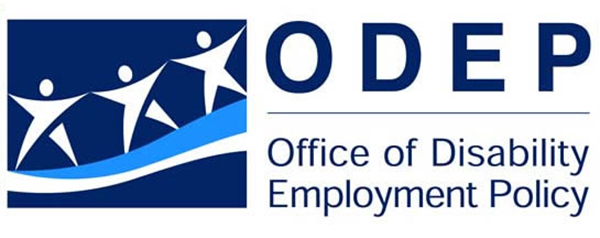
- Last Week’s WIR Story Reporting Three Bills and a Senate Resolution Attacking Critical Race Theory Was Just the Tip of The Iceberg
- Comments Requested on the Employment Navigator and Partnership Pilot Study To Assist Transitioning Veterans
- U.S. DOJ Nominee Kristen M. Clarke Now Set for Full Senate Vote
- U.S. Senate Voted to Overturn the EEOC’s Recent Conciliation Process Transparency Reforms
- EEOC Recognized Asian American and Native Hawaiian/Pacific Islander Heritage Month
- Global Accessibility Awareness Day – Get On It!
- “Ask JAN”: Answers On COVID-19, Vaccinations, And The ADA
Update: Last Week’s WIR Story Reporting Three Bills and a Senate Resolution Attacking Critical Race Theory Was Just the Tip of The Iceberg

Since we pride ourselves on being a “paper of record” with links to all significant documents we discuss in our WIR stories, we doubled back this week assuming that any COVID-19 driven delay would now surely be overcome and the bill numbers and texts would now be available for our readership.
Well, there are two surprises, but first we now do have the Bill number of “The Stop CRT ACT” (it is H.R. 3179.) We also now have its text. Representative Dan Bishop (R-NC) introduced this Bill on May 13, 2021 with 45 co-sponsors! The intent of H.R. 3179 is to codify former President Trump’s Executive Order 13950. The text of the Bill we have published, above, is an informal copy from Representative Bishop’s website as he introduced the Bill. It is not an official copy from the House Clerk (who is still backlogged and has not yet posted the official text two weeks after introduction. NOTE: this is usually a 1–2-day exercise, pre-pandemic.)
SURPRISE #1: House Republicans were busy two weeks ago and it turns out the House Clerk has just now caught up, in part, and has published a report of two more Bills attacking CRT:
- H.R. 3134: Representative Bishop also introduced this Bill, but it was his first offering (the day before he introduced The Stop CRT Act). Representative Bishop put this Bill forward on May 12, 2021 with 51 co-sponsors! (That is almost 12% of the 435 sitting Members of the House of Representatives and almost a quarter of all Republican House Members!) While the text of H.R. 3134 is also not yet available from the House, the text copy we have provided (above) is also an informal copy as taken from Representative Bishop’s website. The Bill states that its intent is “To prohibit the United States Armed Forces from promoting anti-American and racist theories;”
- H.R. 3249: Representative Jody B. Hice (R-GA) introduced this Bill on May 14, 2021, with 11 co-sponsors, to codify former President Trump’s now rescinded Executive Order 13950. The text of the Bill is not yet available, although we have reached out to Congressman Hice’s office to obtain at least an informal copy.
SURPRISE #2: Like a vampire in the night, this issue of teaching Critical Race Theory refuses to die! Republicans have now fastened onto the CRT issue as a classic political “wedge issue” Republicans now believe they can use to back their Democrat opponents into a corner in the coming mid-term 2022 elections. Democrats will soon be forced to answer in political debates whether they will vote to stop CRT (in several different ways per all the different Bills now pending but going nowhere in this House, of course) or whether they endorse the view that American society is inherently racist and that Whites maintain their power through unfair laws designed to hold back non-Whites. Anti-CRT theology is going to be the Republican antidote to Democrat “racial identity” politics. The controversy over CRT is not over: it’s just starting. And, it is not about the Hispanic vote; it is ultimately about the Asian vote, as Asians have profited economically the most from American law and society. (Asians overall continue to have the highest earnings compared to any other racial or ethnic group in the United States.)
Tuesday, May 18, 2021: Comments Requested on the Employment Navigator and Partnership Pilot Study To Assist Transitioning Veterans

The Chief Evaluation Office (CEO) of the U.S. Department of Labor (DOL) intends to design and conduct an evaluation of a new DOL-funded initiative called the Transition Assistance Program (TAP) Employment Navigator and Partnership Pilot. This study aims to assess the feasibility of delivering individualized career counseling to transitioning service members (TSMs) and military spouses. The ENPP addresses a requirement of the 2019 National Defense Authorization Act to offer individual counseling as part of the transition process for the TAP.
See our previous report from Thursday, April 1, 2021: “VETS Launched a New Pilot Program to Assist Transitioning Service Members and Their Spouses” for more details.
DOL is particularly interested in comments that do the following:
- evaluate whether the proposed collection of information is necessary for the proper performance functions of the agency, including whether the information will have practical utility;
- evaluate the accuracy of the agency’s burden estimate of the proposed information collection, including the validity of the methodology and assumptions;
- enhance the quality, utility, and clarity of the information to be collected; and
- minimize the burden of collecting information on those who are to respond, including using appropriate automated, electronic, mechanical, or other technological collection techniques or other forms of information technology—for example, permitting electronic submissions of responses.
Comments are due on or before July 19, 2021.
Tuesday, May 18, 2021: U.S. DOJ Nominee Kristen M. Clarke Now Set for Full Senate Vote

This busy legislative day for Ms. Clarke’s candidacy began with Senate Majority Leader Chuck Schumer first exercising his discretion and authority to file a “discharge motion” in the Senate pursuant to Senate Resolution 27 of the 117th Congress. Senator Schumer’s discharge motion called for a vote of the full Senate to command the Senate Committee on the Judiciary to “discharge” further consideration of Ms. Clarke’s nomination to the full Senate for its (later) consideration. Senator Schumer’s motion needed a mere majority vote to pass.
On a razor-thin vote with no room to spare and on a near political party line vote of 50-48, Senator Schumer’s “discharge motion” squeaked by with just enough votes. (Senators Stabenow (D-MI) and Murkowski (R-AK) did not vote, but Senator Collins (R-ME) switched sides and voted with the Democrats to make up for Senator Stabenow’s lost vote to get to 50 “Yea” votes. (NOTE: a no-vote counts as a vote against the nominee, in effect, since the nominee has to win a majority of votes from all (100) “seated” (not voting) Senators). This result then allowed Senate Majority Leader Schumer to bring President Biden’s nomination before the full Senate to obtain its “advise and consent” as to Ms. Clarke’s candidacy. Long and tough job interview process.
How we got here: The Senate voted on Senator Schumer’s discharge motion after a tie-vote occurred last week in the Senate Committee on the Judiciary following Committee Hearings to consider Ms. Clark’s candidacy. (See WIR “Another Senate Tie-Vote on a Presidential Nominee – This Time in the DOJ“).
S.Res.27 — 117th Congress (2021-2022) establishes procedures to command Senate committees (and Committees to command subcommittees) to discharge from further consideration those items of business which have come before the committee but which the committee did not favorably report out due to a tie vote. The Resolution also prohibits a cloture motion from being filed on an amendable item of business during its first 12 hours of debate (thus giving Senators an opportunity to make a motion to amend AND ensuring at least 12 hours of precious Senate Floor time is consumed before the motion to discharge may be scheduled for a vote and even before the (later) full Senate vote on the merits of the matter being discharged to the Senate: so two votes in the Senate if the motion to discharge is successful, as here).
What’s Next: Senate Majority Leader Schumer will schedule a full Senate Floor vote when Democrat Whip (Senator Dick Durbin) privately advises the Senate Majority Leader that Schumer has the votes he needs to win a majority vote, if he does. So, this will be a busy week for Senator Durbin to twist Democrat arms to keep them in line with the party, find out what’s up this week with Senator Stabenow and see where he is on a vote on the merits as to Ms. Clarke, and see if Senator Collins is also willing to cross over from the Republican side on the vote on the merits of the nomination. It will likely also be a busy week ahead for Ms. Clarke as she may be running up to the Hill for behind closed-door meetings with any nervous Democrats and on the other side of the aisle with any fence-sitting Republicans who Senator Durbin thinks Ms. Clarke might be able to persuade to vote for her. Wow, you really have to want this job.
Wednesday, May 19, 2021: U.S. Senate Voted to Overturn the EEOC’s Recent Conciliation Process Transparency Reforms

This Bill is identical to “H.J. Res 33 – 117th Congress” introduced in the U.S. House of Representatives on March 23, 2021, but has yet to go anywhere. The House will presumably now take up the House Resolution since there was uncertainty previously whether the Senate would pass the measure, even on a mere majority vote (pursuant to the Congressional Review Act).
We reported on the Final EEOC Rule in question on Thursday, January 14, 2021: “EEOC Final Rule on Its Conciliation Process Moves in the Direction of Employers, but is Ultimately Disappointing.” It was significant that the EEOC’s Final Rule had moved the Commission staff and lawyers halfway (only) down the path to transparency in settlement negotiations by requiring the EEOC to make detailed written (but only) initial disclosures of position in the conciliation process. It was disappointing to employers that the Commission’s Final Rule continued to allow subsequent rounds of negotiation to only permissively be in writing (they could have been only oral in the Commission’s discretion under the Final Rule). Moreover, the now Final Rule the Senate has disapproved had only permissively allowed a Commission response to the employer and only permissively to contain the details of the Commission’s new understanding of the relevant facts and pertinent law.
If the House now passes its Joint Resolution without amendment (looks like a slam dunk since the vote appears to be proceeding along political party lines), the Resolution will then pass to President Biden for his review and signature or veto. Once President Biden signs the Resolution, the EEOC’s Final Rule will then be rescinded and have no force or effect. The EEOC conciliation process will then return to its original state before the Final Rule became effective on February 16, 2021. However, the Republican controlled EEOC could pass another Final Rule of its choosing…just not the prior Final Rule which the Congress and the President will have disapproved.
Wednesday, May 19, 2021: EEOC Recognized Asian American and Native Hawaiian/Pacific Islander Heritage Month

“The EEOC will continue to vigorously combat unfair treatment against AANHPI persons by investigating charges filed with the Agency; using its enforcement authority when necessary, to stop and remedy unlawful discrimination; striving to improve language access for AANHPI individuals who have limited English proficiency; and working to educate advocates, employers, and employees on their rights and responsibilities in the workplace.”
Congress chose the month of May for AANHPI Heritage Month to commemorate the completion of the transcontinental railroad on May 10, 1869, much of which was built by Chinese immigrant workers and the immigration of the first Japanese to the United States on May 7, 1843. Today, AANHPI persons are the fastest-growing racial or ethnic group in the United States. Between 2000 and 2019, the AANHPI population grew 81%. Using Census Data, the Pew Research Center projects the Asian population to be the nation’s largest immigrant group by the middle of the century and reach 46 million by 2060.
Executive and Legislative Documents
The Law Library of Congress has compiled guides to commemorative observations, including a comprehensive inventory of the Public Laws, Presidential Proclamations, and Congressional Resolutions related to Asian Pacific Heritage Month.
Thursday, May 20, 2021: Global Accessibility Awareness Day – Get On It!

The Department of Labor released a blog, “Global Accessibility Awareness Day: Building an Inclusive Future of Work,” which spotlights new videos by PEAT (Partnership on Employment & Accessible Technology). In the video, four accessibility leaders discuss what the future holds for individuals with disabilities and the potential to make every workplace inclusive.
- Chancey Fleet is an Assistive Technology Coordinator at a New York library. In her video, she gives her perspective on why accessible design matters in digital tools and the need for creating a design and development culture that embraces and values accessibility as a design constraint.
- Lydia X. Z. Brown is the Policy Council for the Center for Democracy & Technology and the Director of Policy, Advocacy, and External Affairs at the Autistic Women & Nonbinary Network. In her video, Lydia dives into the accessibility of Artificial Intelligence (or AI) and the implications of AI and machine learning for individuals with disabilities.
- Ather Sherif is a Software Engineer at Comcast and Founder of EvoXLabs. In his video, Ather discusses accessibility in the era of telework and the importance of bringing the voices of people with disabilities to the table when designing technologies. He offers his advice on how employers can ensure the inclusion of people with disabilities in a tech-driven workplace.
- Haley Moss is an attorney, author, and artist who is also autistic. In her video, she gives her perspective on how technology plays a role in her daily life, what telework is teaching us about accessibility and accommodations, and the web accessibility considerations she hopes to see more concretely cemented into the ADA.
Where Does Your Company’s Homepage Stand?
In 2020, WebAIM analyzed one million home pages for accessibility issues and found the following:
When was the last time your organization reviewed its website for accessibility? How about its career site? Recruit Rooster can help; give them a cock-a-doodle-do (or, in other words, reach out).
Friday, May 21, 2021: “Ask JAN”: Answers On COVID-19, Vaccinations, And The ADA

Among the most recent additions to JAN’s COVID-19 webpage are:
- FAQs onCOVID-19 Vaccination and the ADA
- FAQs on COVID-19 Long Haulers and the ADA
- Blog onAccommodating Employees with COVID-19-Related Symptoms
Tip sheet on Accommodation Strategies for Returning to Work During the COVID-19 Pandemic
THIS COLUMN IS MEANT TO ASSIST IN A GENERAL UNDERSTANDING OF THE CURRENT LAW AND PRACTICE RELATING TO OFCCP. IT IS NOT TO BE REGARDED AS LEGAL ADVICE. COMPANIES OR INDIVIDUALS WITH PARTICULAR QUESTIONS SHOULD SEEK ADVICE OF COUNSEL.
SUBSCRIBE.
Compliance Alerts
Compliance Tips
Week In Review (WIR)
Subscribe to receive alerts, news and updates on all things related to OFCCP compliance as it applies to federal contractors.
OFCCP Compliance Text Alerts
Get OFCCP compliance alerts on your cell phone. Text the word compliance to 55678 and confirm your subscription. Provider message and data rates may apply.


